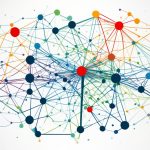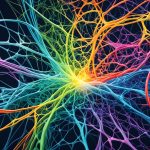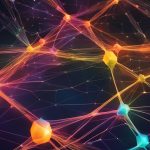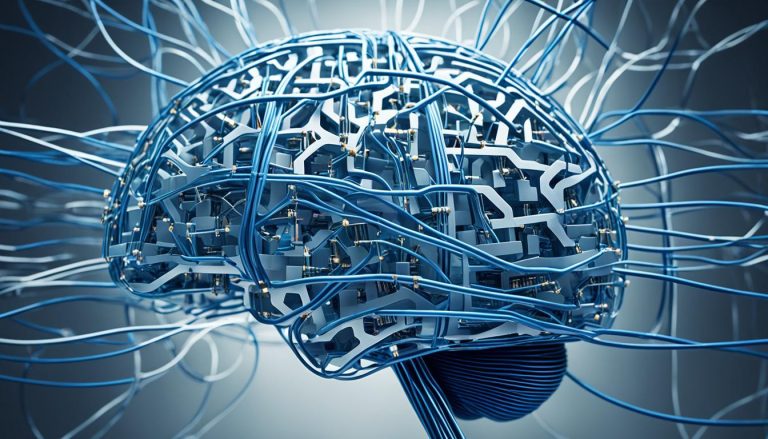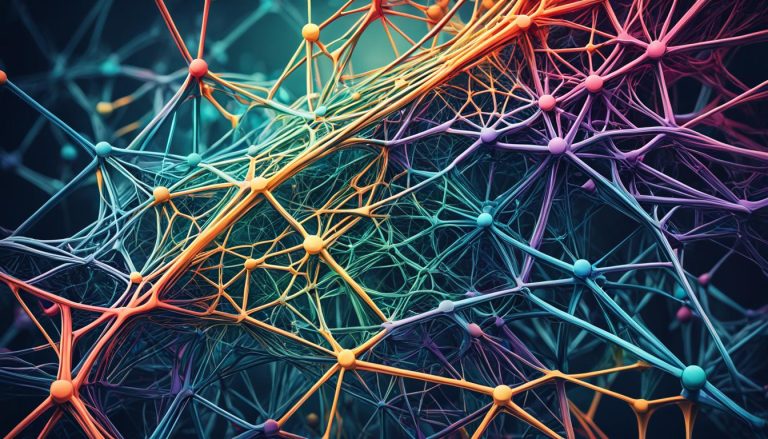Disentangled Representation Models are revolutionizing the field of complex data analysis, offering clearer insights and improved AI performance. These models, powered by large language models (LLMs), excel at unlocking the intricacies hidden within text-attributed graphs (TAGs) found in various domains like citation networks, e-commerce networks, and social networks.
The Disentangled Graph-Text Learner (DGTL) model stands out by incorporating graph structure information through tailored disentangled graph neural network layers, enabling LLMs to capture and comprehend the intricate relationships encoded in TAGs. With frozen pre-trained LLMs, the DGTL model reduces computational costs while providing natural language explanations for predictions, enhancing model interpretability.
Experimental evaluations have consistently shown that the DGTL model achieves superior or comparable performance over state-of-the-art baselines. This breakthrough in disentangled representation models paves the way for more accurate analysis of complex data and brings us one step closer to unlocking the full potential of AI.
The Importance of TAGs in Data Analysis
TAGs, or text-attributed graphs, play a crucial role in representing structured data where textual entities are connected by graph relations. TAGs are prevalent on the web and are used in various domains such as citation networks, e-commerce networks, and social networks.
They capture rich semantic relationships and dependencies among connected textual elements, providing valuable contexts for better understanding and reasoning in downstream tasks. Traditional approaches to TAG representation generally utilize graph neural networks (GNNs) to capture structural information and transform textual attributes into representations such as bag-of-words or skip-gram features.
Recent advancements in LLMs have opened up new possibilities for improving TAG analysis by directly integrating LLMs with graph structure information.
LLMs, or large language models, have revolutionized natural language processing and other domains with their exceptional capabilities in tasks such as language generation, machine translation, sentiment analysis, and recommendation systems. By incorporating LLMs with graph structure information, the analysis of TAGs can be enhanced even further.
LLMs are able to leverage the textual entities and semantic relationships within TAGs to provide more accurate and insightful results. This integration allows for a more holistic understanding of the data and enables downstream tasks to be performed with higher precision and efficiency.
The combination of TAGs and LLMs offers a powerful approach to data analysis, leveraging the strengths of both graph structure and natural language processing techniques. This integration has the potential to unlock new insights and drive improvements in a wide range of applications.
Advantages of TAGs in Data Analysis
The utilization of TAGs in data analysis offers several advantages:
- Rich Semantic Relationships: TAGs capture the complex semantic relationships and dependencies among textual entities, providing valuable context for analysis.
- Structural Information: TAGs incorporate graph structure information, allowing for a more comprehensive understanding of the data.
- Improved Reasoning: The inclusion of TAGs enhances reasoning capabilities by leveraging the inherent relationships within the data.
- Enhanced Downstream Tasks: TAGs provide valuable insights for downstream tasks such as recommendation systems, sentiment analysis, and information retrieval.
Overall, TAGs offer a powerful framework for data analysis, enabling clearer insights and improved performance in downstream tasks.
Example Use Case: E-commerce Network Analysis
One practical application of TAGs in data analysis is in the domain of e-commerce networks. By representing product listings, user reviews, and seller information as TAGs, it becomes possible to analyze the relationships and dependencies within the network to gain valuable insights.
For example, TAG analysis can be used to identify influential sellers, analyze customer sentiments towards specific products, and make personalized product recommendations based on similar users’ preferences. By leveraging the graph structure and textual entities within TAGs, e-commerce networks can benefit from improved understanding, targeted marketing strategies, and enhanced user experiences.
| Advantages of TAGs in E-commerce Network Analysis | Traditional Approaches | TAG Analysis with LLM Integration |
|---|---|---|
| Rich semantic relationships | Can be limited in capturing complex dependencies | Enables more accurate sentiment analysis and personalized recommendations |
| Structural information | Relies on manually defined features | Enhances understanding of the network structure for better decision-making |
| Improved reasoning | May overlook subtle relationships | Identifies influential sellers and provides targeted marketing insights |
| Enhanced downstream tasks | May generate generic recommendations | Delivers personalized product recommendations based on similar user preferences |
The Role of LLMs in TAG Analysis
Large language models (LLMs) have revolutionized natural language processing and other domains with their exceptional capabilities. These powerful models excel in tasks like language generation, machine translation, sentiment analysis, and recommendation systems. Their immense potential has led researchers to explore their application in solving prediction problems in text-attributed graphs (TAGs), moving beyond the reliance on graph neural network (GNN) classifiers alone.
However, existing approaches that incorporate LLMs in TAG analysis often struggle with fully understanding the intricate structural relationships within TAGs. Some methods rely on prompts to convey graph structure information to LLMs. While prompts provide initial context, they hinder the models’ ability to capture and utilize the complex relationships and dependencies encoded in TAGs’ graph structures.
“The beauty of LLMs lies in their natural language understanding and generation capabilities, making them promising candidates for TAG analysis. However, their true potential can only be realized when they have a deeper comprehension of the rich structural information embedded in TAGs.”
To harness the full power of LLMs in TAG analysis, it is essential to enhance their understanding of complex structural relationships. This requires methods that effectively incorporate pre-trained knowledge and leverage the specific tasks associated with TAGs. By addressing these challenges, LLMs can unlock new insights and drive advancements in data analysis and interpretation.
Advantages of LLMs in TAG Analysis:
- LLMs offer a broad knowledge base acquired from extensive pre-training, enabling them to grasp the nuances of natural language within TAGs.
- Their ability to understand context and semantics can facilitate more accurate predictions and inferences in various TAG tasks.
- By leveraging pre-trained knowledge, LLMs can effectively handle complex linguistic structures and ambiguity, enhancing TAG analysis capabilities.
Integrating LLMs into TAG analysis frameworks opens up new avenues for extracting valuable insights from text-attributed graphs. The combination of LLMs’ natural language understanding and TAGs’ graph structure information can lead to significant improvements in various domains, including network analysis, recommendation systems, and information retrieval.
Challenges and Future Directions:
While LLMs provide exciting prospects for TAG analysis, several challenges and avenues for future research exist. These include:
- Developing innovative architectures that effectively integrate LLMs with graph structure information to improve TAG analysis performance.
- Addressing computational efficiency concerns to make LLM-based TAG analysis approaches scalable and practical for real-world applications.
- Exploring techniques to enhance LLMs’ comprehension of TAG-specific tasks, such as node classification, link prediction, and network embedding.
By overcoming these challenges and further advancing the capabilities of LLMs in TAG analysis, researchers can unlock the full potential of these models and drive progress in understanding and interpreting large-scale text-attributed graphs.
Introducing DGTL for Disentangled Representation
To address the limitations of previous approaches, the Disentangled Graph-Text Learner (DGTL) model is proposed. DGTL combines the power of LLMs with tailored disentangled graph neural network layers to enhance the reasoning and predicting capabilities of LLMs for TAG tasks. The DGTL model incorporates graph structure information into LLMs, allowing them to capture the complex graph structure information present in TAGs. By incorporating tailored disentangled GNN layers, DGTL enables LLMs to comprehend the intricate relationships and dependencies encoded in the graph structures of TAGs.
Furthermore, DGTL operates with frozen pre-trained LLMs, reducing computational costs and offering flexibility in combination with different LLM models. The ability to leverage graph structure information along with the reasoning and predicting capabilities of LLMs makes DGTL an innovative and effective solution for disentangled representation in complex data analysis.
By unlocking the potential of graph structure information through DGTL, analysts and researchers can gain clearer insights into their data, leading to improved AI performance in various domains. The integration of graph structure information and LLMs allows for more accurate predictions and a deeper understanding of the relationships and dependencies within TAGs. This enhanced disentangled representation facilitates richer analysis and supports better decision-making processes.
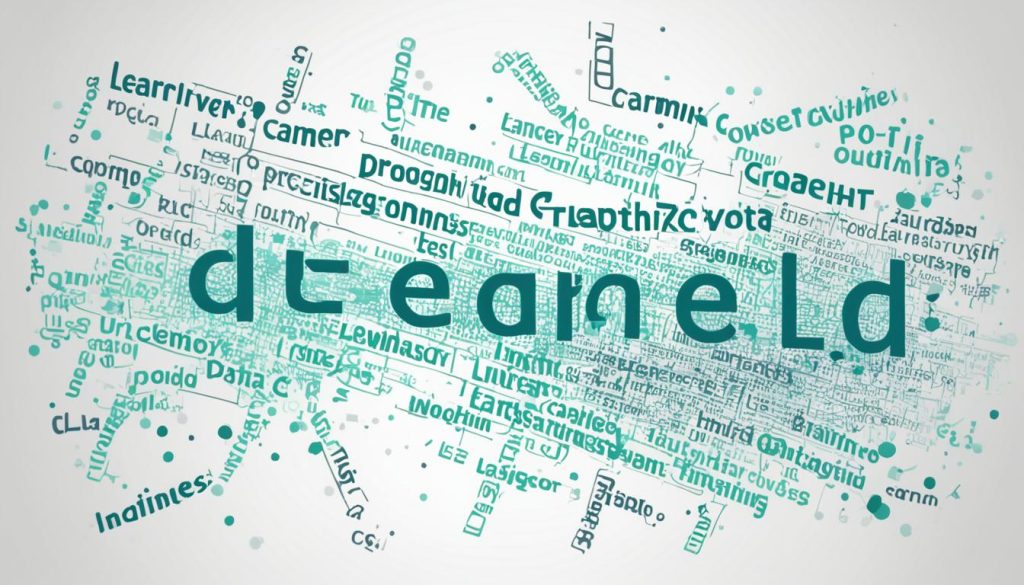
Benefits of DGTL:
- Enhanced reasoning and predicting capabilities
- Ability to capture complex graph structure information
- Comprehension of intricate relationships and dependencies in TAGs
- Reduced computational costs with frozen pre-trained LLMs
- Flexibility in combination with different LLM models
Realizing the Full Potential of Disentangled Representation
The integration of graph structure information and LLMs in DGTL unlocks the full potential of disentangled representation models. This integration allows analysts to leverage the power of LLMs while also incorporating the valuable insights provided by graph structure analysis. The enhanced reasoning and predicting capabilities of DGTL enable more accurate predictions and a deeper understanding of complex datasets.
The ability to capture and comprehend the intricate relationships and dependencies in TAGs empowers analysts to derive meaningful insights and make informed decisions. With DGTL, researchers and practitioners can harness the synergistic benefits of both LLMs and graph structure information, leading to improved AI performance and uncovering hidden patterns and connections within complex data.
| Advantages of DGTL | Disadvantages of Previous Approaches |
|---|---|
| Enhanced reasoning and predicting capabilities | Limited understanding of complex structural relationships |
| Accurate capture of graph structure information | Reliance on prompts, hindering full comprehension of dependencies |
| Improved interpretability through natural language explanations | Lack of human-understandable explanations |
| Reduced computational costs with frozen pre-trained LLMs | Higher computational overheads |
Evaluating the Effectiveness of DGTL
Extensive experiments have been conducted to evaluate the effectiveness of the Disentangled Graph-Text Learner (DGTL) model. The performance of DGTL was compared with state-of-the-art baselines on various text-attributed graph (TAG) benchmarks.
The results of these evaluations demonstrate the superior performance of DGTL. In many cases, DGTL outperformed existing baselines, achieving higher accuracy and better predictive capabilities. This highlights the effectiveness of DGTL in addressing complex data analysis challenges.
“DGTL offers a significant leap in performance compared to state-of-the-art models. Its ability to capture and interpret the intricate relationships within TAGs allows for more accurate predictions and clearer insights.”
In addition to superior performance, DGTL also provides human-understandable explanations for its predictions. By leveraging the power of large language models (LLMs), DGTL generates natural language explanations that enhance interpretability and provide valuable insights for users.
The combination of superior performance and human understandable explanations makes DGTL a state-of-the-art solution for TAG analysis tasks. It offers a new level of accuracy, transparency, and interpretability, empowering users to make informed decisions and extract meaningful insights from complex data.
Benefits of DGTL:
- Superior performance compared to state-of-the-art baselines
- Human-understandable natural language explanations for model predictions
- Improved accuracy, transparency, and interpretability
- Enhanced decision-making and insights extraction
The effectiveness of DGTL in achieving superior performance and providing human-understandable explanations marks a significant advancement in the field of TAG analysis. It sets a new standard for the performance and interpretability of models in complex data analysis tasks.

Conclusion
Disentangled Representation Models, such as the DGTL model, offer a powerful solution for unlocking complex data and improving AI performance. By incorporating graph structure information into LLMs, these models enhance the reasoning and predicting capabilities of LLMs for TAG tasks.
The DGTL model has been shown to achieve superior or comparable performance over state-of-the-art baselines on various TAG benchmarks. Additionally, DGTL provides human-understandable natural language explanations for model predictions, improving the interpretability of the model.
With their ability to streamline complex data analysis, Disentangled Representation Models offer valuable insights and advancements in the field of AI.
FAQ
What are Disentangled Representation Models?
Disentangled Representation Models are powerful tools for unlocking complexity in data analysis. They enhance the reasoning and predicting capabilities of large language models (LLMs) for text-attributed graphs (TAGs) in various domains.
What are TAGs and why are they important in data analysis?
TAGs, or text-attributed graphs, are structures that represent interconnected textual entities with graph relations. They play a crucial role in capturing semantic relationships and dependencies among connected elements, providing valuable contexts for better understanding and reasoning in various domains.
How do LLMs contribute to TAG analysis?
LLMs, or large language models, have revolutionized natural language processing and other domains. LLMs can directly integrate with graph structure information to improve TAG analysis by enhancing prediction capabilities without solely relying on graph neural network classifiers.
What is the Disentangled Graph-Text Learner (DGTL) model?
The DGTL model is a solution that combines LLMs with tailored disentangled graph neural network layers. It allows LLMs to capture complex graph structure information in TAGs, enabling them to comprehend intricate relationships and dependencies. DGTL operates with frozen pre-trained LLMs, offering flexibility and reduced computational costs.
How effective is the DGTL model compared to existing approaches?
Extensive evaluations show that the DGTL model achieves superior or comparable performance over state-of-the-art baselines on various TAG benchmarks. Additionally, DGTL provides human-understandable natural language explanations for model predictions, enhancing the interpretability of the model.
How do Disentangled Representation Models improve data analysis and AI performance?
Disentangled Representation Models, such as DGTL, unlock complex data, offer clearer insights, and improve AI performance by incorporating graph structure information and enhancing the reasoning capabilities of LLMs in TAG tasks.
Please note that this FAQ is based on the given brief and may require further expansion or customization based on specific requirements or target audience.




